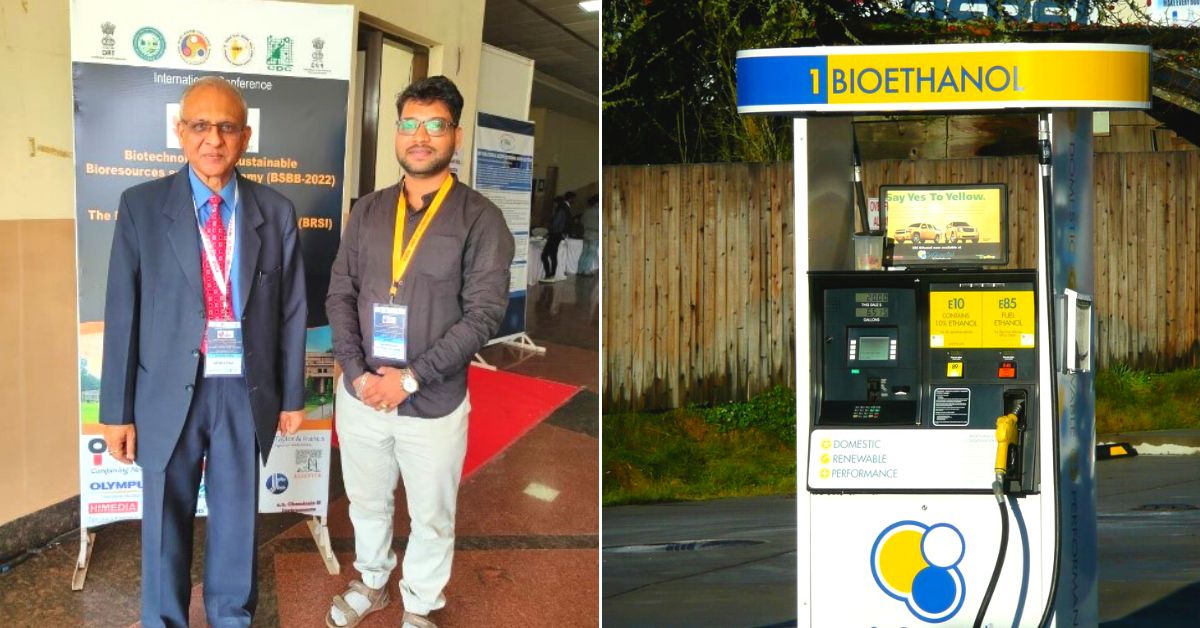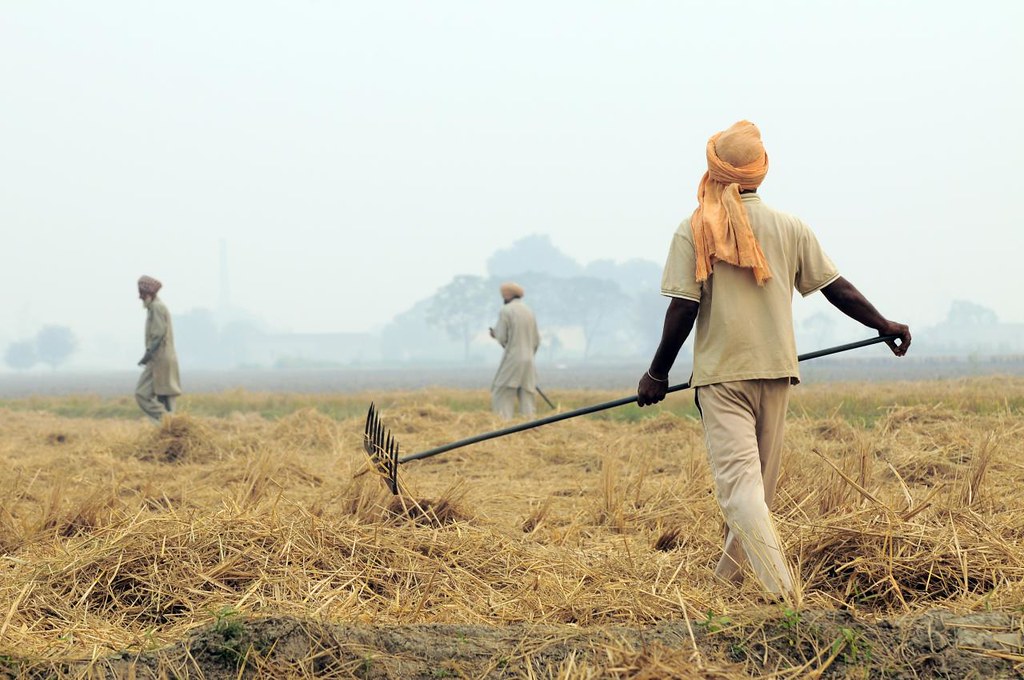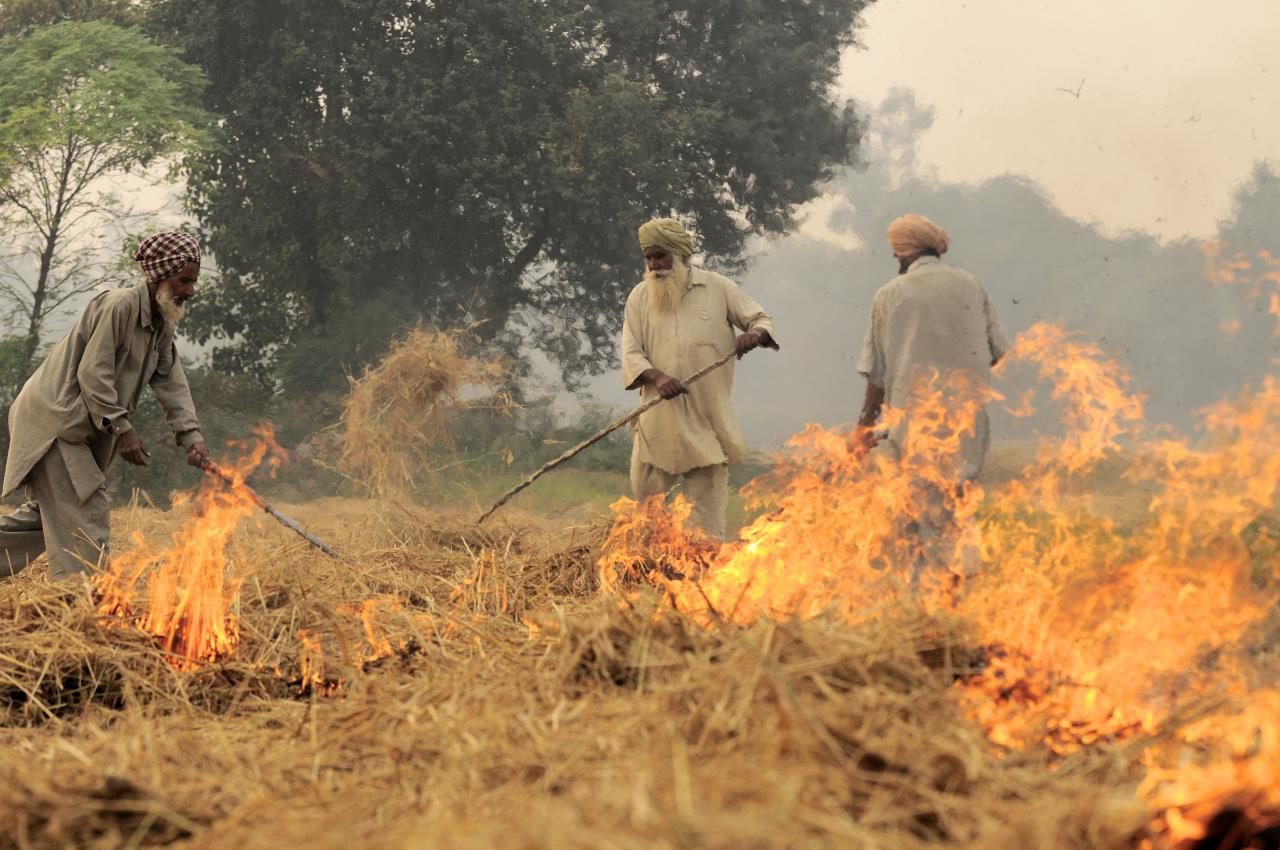Cow Gut Bacteria Hosts Solution for Recycling Crop Waste to Bioethanol: IIT Guwahati
IIT Guwahati researchers report an efficient multifunctional enzyme from a bacterium found in the gut of cows that can break down woody biomass for conversion to bioethanol fuel. Know more.

This article has been sponsored by Wingify Earth.
In a significant breakthrough, researchers at the Indian Institute of Technology Guwahati (IIT-G) have closely studied the efficacy of a specific bacterial endoglucanase enzyme — RfGH5_4 from Ruminococcus flavefaciens (a bacterium found in the gut of cows) in breaking down woody biomatter into a simple sugar that can be fermented efficiently to produce bioethanol.
Professor Arun Goyal from the Department of Biosciences and Bioengineering, IIT-G, led this team of researchers in India, including his doctoral student Parmeshwar Gavande, in collaboration with their peers from the University of Lisbon, Portugal. They recently published the discovery and observations of the research in the International Journal of Biological Macromolecules.
(Above images of Prof. Arun Goyal and Parmeshwar Gavande on the left and a representational image on the right)
Some context
The production of fuel from renewable biological sources has elicited significant scientific interest in recent years because of the problems of dwindling fossil fuel reserves and the environmental pollution associated with their generation and use.
Of the many biofuels known, ethanol (or ethyl alcohol) is widely studied because of its positive impact on the environment. This intoxicating component of spirits and drinks, which can also be used to fuel vehicles, is commonly produced by the fermentation of sugar and starch-containing raw materials — grapes, barley and potatoes among others.
However, there is interest in developing methods to extract bioethanol for fuel from agricultural and forestry residues and crops that are rich in carbohydrate polymers (lignocellulose) — the plant dry matter that constitutes the woody part of plants.
“For industrial production of bioethanol as fuel, the lignocellulose extracted from plants is deconstructed by using the biological catalysts (enzymes) called cellulases and subsequently fermented. Endoglucanase is one such cellulase enzyme. The bottleneck to the conversion of lignocellulosic biomass to bioethanol is the poor efficiency of these enzymes. Furthermore, the lignocellulosic biomass contains hemicellulose along with cellulose, which cannot be broken down by many endoglucanases,” notes a press release issued by IIT-Guwahati earlier this week.

Why is this study important?
Agricultural residual biomasses are wasted or burned causing various environmental hazards including global warming and climate change. Their deconstruction by RfGH5_4 might extend its usage from facilitating the process of manufacturing bioethanol to food medicine as well.
“Petroleum-based crude oil is depleting fast and thus, we need an alternate yet efficient source of fuel. Nowadays, extensive research is dedicated to the bioenergy sector, especially to developing bioethanol from plant biomass. We started this research on RfGH5_4 cellulase enzymes with an aim of prospecting an efficient cellulase enzyme. The research was part of a government-aided project on the development of novel and efficient enzymes for sustainable bioenergy, funded by the Department of Biotechnology, Government of India,” says Prof Goyal.
The research was begun back in 2018 and was explored as a part of the PhD thesis work by Parmeshwar Gavande, under the supervision of Prof. Arun Goyal.
“It took us about four and a half years to extensively study the properties of RfGH5_4 cellulase enzyme, its mechanism of action, the structural basis of its multifunctionality, and finally to check its compatibility in deconstructing the mechanically and chemically processed agricultural residual biomasses such as cotton residual crop stalk, sorghum stalk, sugarcane bagasse, etc,” he adds, in a conversation with The Better India.
Further explaining the importance of this study, Prof Goyal says, “The production of bioethanol — a fuel of the 21st century — requires certain sugars like glucose as the starting material which is converted to ethyl alcohol (or spirit or bioethanol) by using different fungi or bacteria through the fermentation process. Plant biomass like agricultural crop residues is a wasted resource full of cellulose and other carbohydrate polymers.”
Using biotechnology, efforts are underway to convert this waste into wealth in the form of bioethanol. What is majorly required by the current bioethanol industry is efficient enzymes which can convert plant biomass to fermentable sugars.
“Our research tried to address this issue, wherein we reported an efficient yet multifunctional cellulase (a complex group of enzymes which are secreted by a broad range of microorganisms including fungi, bacteria) degrading enzyme which we named RfGH5_4,” he explains.
“Apart from cellulose, RfGH5_4 is able to deconstruct a range of different carbohydrate polymers with different levels of efficiencies which are present in the plant biomass and this makes it a multifunctional enzyme — usually a rare property for cellulases,” he adds.
The multifunctionality generates different possible opportunities for the usage of RfGH5_4, apart from bioethanol production, in the textile, food industry, food medicine and pharmaceuticals.
Breaking down the process
This efficient multifunctional enzyme called RfGH5_4 is a part of the metabolic machinery of the bacterium Ruminococcus flavefaciens which usually resides inside the bovine rumen (stomach compartment of cows in this case). Cows graze on grasses or any soft stems of plant biomass which, in turn, this bacterium utilises as a source of energy. The process is pretty much similar to that of the intake of carbohydrates like starch by humans in the form of food.
“The plant biomass is enriched with different carbohydrate polymers — the largest one being cellulose. Cellulose is nothing but a chain of glucose sugar which are tightly linked to each other through a chemical bonding called glycosidic linkage. To utilise cellulosic-linked glucose as a source of energy, this chemical bonding must be broken so that individual glucose becomes available for the bacterium as well as for the cows,” explains Gavande.
“But being one of the strongest chemical bonds, it requires at least a set of three different enzymes to cut cellulose to glucose in a stepwise manner. This is where RfGH5_4 or these kinds of enzymes (called cellulase) come into the picture which plays a critical role in converting longer cellulose chains into shorter ones (called cellooligosaccharides). These shorter cellulose chains are then subsequently converted to individual glucose units,” he adds.
The produced glucose is readily fermented to bioethanol using certain fungi or bacteria.

Potential for scaling up?
“The research carries the potential for scaling up; as an agricultural economy, India produces a huge amount — about several million metric tons — of agricultural residual biomasses. However, the scaling up would pose some real-time challenges, which would require to be addressed empirically before proceeding, besides the fact that the research is ongoing. Having said that, we have received certain enthusiastic industry interests to scale up our research,” says Gavande.
“The presented research constructively tries to lend a helping hand in addressing the Sustainable Development Goals 2030 (SDGs) of the United Nations”, Prof. Goyal further adds. Gavande underlines the importance of the present research for a sustainable and environment-friendly economy. If you found our stories insightful, informative, or even just enjoyable, we invite you to consider making a voluntary payment to support the work we do at The Better India. Your contribution helps us continue producing quality content that educates, inspires, and drives positive change. Choose one of the payment options below for your contribution- By paying for the stories you value, you directly contribute to sustaining our efforts focused on making a difference in the world. Together, let’s ensure that impactful stories continue to be told and shared, enriching lives and communities alike. Thank you for your support. Here are some frequently asked questions you might find helpful to know why you are contributing?

(Images courtesy IIT-Guwahati, Flickr/neufcent9, Flickr/Alliance of Biodiversity International/Wikimedia Commons)
(Edited by Pranita Bhat)
This story made me
-
97
-
121
-
89
-
167














